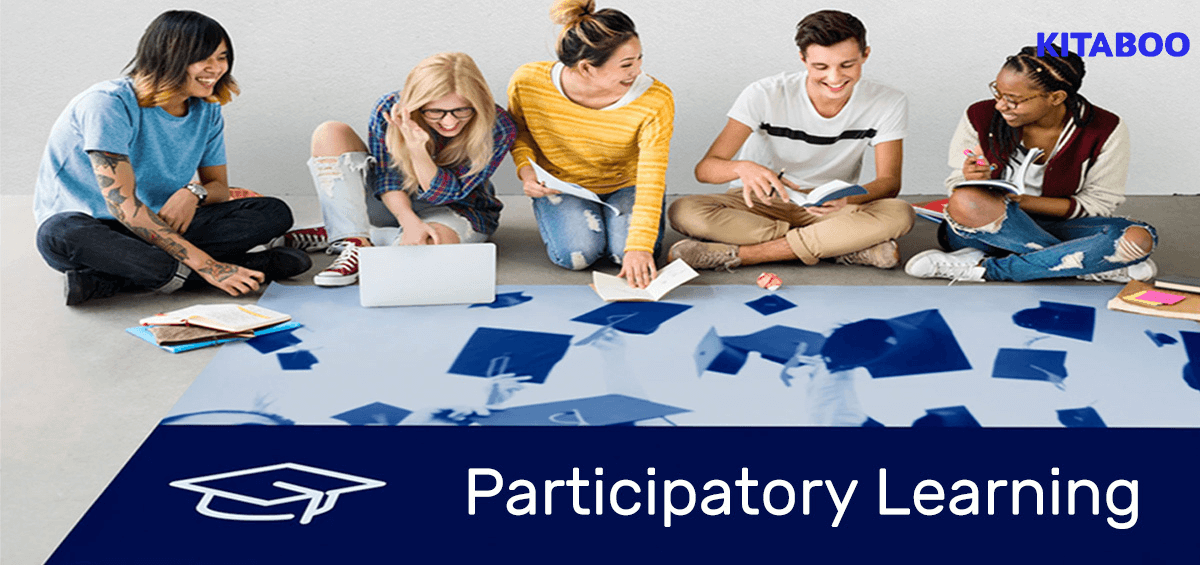Curriculums are primarily designed with the students as the focus, but this focus often shifts away from the students when it comes to its implementation.
Traditional teaching methodologies have consistently been shown to fail to empower students, as they primarily involve the administration of the curriculum on the part of the teacher. The student’s involvement in these methodologies remains minimal, which can often be disempowering.
Increased research and studies related to the impact of different teaching methodologies have shown that participatory learning is one of the best ways to empower students in the classroom. It turns them from passive listeners to active participants, thereby increasing motivation levels and helping them retain crucial information better.
In this guide, we discuss the various benefits of participatory learning and how it can help empower students the world over.
Table of Contents
I. The Various Benefits of Participatory Learning in Schools
- It Helps Students Understand Concepts Better
- It Helps Improve Information Retention
- It Goes a Long-Way in Stimulating Team Building
- Participatory Learning Helps Boost Engagement Levels
- Participation Helps Shape Curriculums Better
II. In Conclusion
The Various Benefits of Participatory Learning in Schools
Participatory learning refers to an approach to learning that focuses primarily on the learner and their participation in various activities to help achieve certain learning outcomes. It offers various benefits to a student’s overall academic development.
From helping students understand concepts better, boosting retention, and making them stronger future employees, the list is endless. In this section, we take a look at each one of these benefits that result from an active learning atmosphere.
Helps Students Understand Concepts Better
The very first benefit of participatory learning is that it helps students understand concepts far better than traditional rote learning methodologies. This is because traditional methods focus on a top-down approach where students are passive listeners.
On the other hand, when students participate, ask questions, clarify doubts, and participate in the practical implementation of different concepts, their overall understanding of the subject improves.
In recent times, the introduction of Learning Management Systems (LMS) in schools, especially in the post-pandemic world, has significantly helped boost student participation.
This can be seen in the fact that over 90% of students prefer online learning over traditional methods. This is because the use of digital solutions offers various means by which teachers can actively involve students in the learning process.
Be it via the use of games, practical experiments, or the use of explanatory videos, the current deviation from the traditional lecture format has offered various benefits.
Helps Improve Information Retention
When a student activity participates in class, they’re more likely to understand concepts better, as mentioned above. When this participation takes the form of practical experiments and games, it helps students relate certain concepts to a stimulating and memorable experience.
All this results in students being able to retain a lot more information for much longer. This ultimately results in better grades in examinations and tests while also giving students the opportunity to meaningfully contribute to discussions in the future, even if in their personal lives.
Stimulates Team Building
In a post-pandemic world, institutions, students, and teachers alike have become a lot more comfortable with online learning solutions. This is further proven by the fact that 63% of students say that they choose to study online as it offers them a lot more flexibility.
While this has its fair share of benefits, a largely online system of learning isn’t ideal for students at the K-12 level.
This is primarily because a student’s formative years are crucial in helping them develop a sense of self, helping build their self-confidence, and their ability to collaborate with their peers. The third is a skill that will serve them well in every stage of their life.
The benefit of participatory or active learning is that it encourages students to work together to solve problems, find solutions, and more, thereby encouraging team building. In fact, 61% of teachers think that hands-on activities can help increase student engagement and the overall learning experience.
It helps students learn how to collaborate with different individuals with different backgrounds.
Participatory Learning Helps Boost Engagement Levels
Every student has a different attention span, and when this level is breached, students are likely to retain less information. Longer periods of learning, especially when they occur passively, can lead to information overload, defeating the purpose of the education process.
However, with participatory learning, students get the chance to engage with their peers and teachers, participate in finding solutions to problems, and use their theoretical knowledge in the real world.
This significantly helps boost student engagement, as it offers students a variety in terms of learning methodologies while also aiding retention.
Participation Helps Shape Curriculums Better
The more that students participate in the classroom, the more the feedback process becomes seamless. This works for both teachers and students.
In a participatory learning model, students are encouraged to provide their feedback on the curriculum and its various aspects, along with the teaching methodologies used.
Be it through surveys or data extracted from trends in student performance over time, schools and school districts can make meaningful changes by truly placing students at the center of the curriculum development process.
This, in turn, helps schools make use of the right tools, be it e-books or LMS, in aiding the learning process. Digital textbook platforms too, can benefit from such data, and those such as KITABOO leverage it to offer institutions and entire school districts a platform to help engage students in the most effective way possible.
Additionally, the process of collecting student feedback can also go a long way in testing out new teaching methodologies, as the ultimate goal is to find what helps improve learning outcomes.
The process, on the whole, gives students a sense of ownership over their learning and development over the years while also helping them use these skills in their CVs in the future.
In Conclusion
Participatory learning is still considered a rather innovative approach to learning in various parts of the world. As a result, the penetration of this approach to every level of schools will take time.
However, with rather promising results, this approach has helped shape students into more confident individuals, improve their academic performance, score better grades, improve their speaking skills, and a whole lot more.
It also equips students with the understanding that they do, in fact, play a crucial role in shaping their future, thereby giving them a sense of ownership of their skills and knowledge.
Moreover, with the presence of Ed-tech and digital textbook publishing platforms like KITABOO, schools can help foster a culture of active or participatory learning that benefits every stakeholder in the education process.
Contact our expert team now and get started!
To know more, please write to us at KITABOO@hurix.com.
Suggested Reads:
Discover How An Ebook Conversion, Publishing & Distribution Platform Can Help You
Kitaboo is a cloud-based content platform to create-publish & securely distribute interactive mobile-ready ebooks.
You May Also Like
-
How Do Cloud Services Benefit K–12 Organizations?
Blog,Digital Publishing,eBook solution / January 31, 2024









